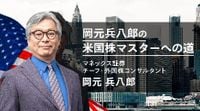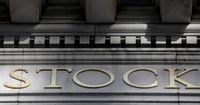On April 2, 2025, the U.S. stock market closed higher amidst volatile trading driven by President Trump's announcement of reciprocal tariffs. The market reacted sharply to the news, with commodities falling following the President's speech. S&P 500 futures and Nasdaq futures declined by 1.6% and 2.4% respectively after Trump detailed his tariff plans.
While tariffs on steel, aluminum, and some automobiles had already been announced, the reciprocal tariffs introduced on April 2 are a cornerstone of Trump's tariff policy. Christopher Wolfe, chief investment officer at Pennington Partners, remarked, "The president's words are important and can change policy and corporate responses. That’s the weight we’re feeling right now." On this day, large tech stocks buoyed the major indexes, with electric vehicle giant Tesla (TSLA.O) rising by 5.3% after Politico reported that Trump informed CEO Elon Musk he would soon step back from his government role.
Amazon.com (AMZN.O) also saw a 2% increase, as the company was identified as a potential buyer for TikTok's U.S. operations. The focus now shifts to the employment statistics set to be released on April 4, 2025, alongside a speech by Federal Reserve Chairman Powell on the same day. Trading volume on U.S. exchanges totaled 15.944 billion shares, slightly above the 20-session average of 15.866 billion shares.
Later that same day, Trump delivered a 50-minute speech at the White House Rose Garden, where he formally announced the new tariff policies. Describing the measures as a response to unfair trade practices by foreign nations, Trump declared this day as "Liberation Day for the United States." Starting April 5, a uniform 10% baseline tariff will be imposed on imports from all U.S. trading partners. Furthermore, from April 9, reciprocal tariffs will be applied to 60 countries identified as "worst offenders."
Despite Trump's assertion that the new tariffs would usher in a "new golden age for American companies," the futures market reacted negatively, with a sharp decline immediately following the announcement. Some Wall Street analysts labeled the announcement as "the worst-case scenario." The primary concern centers on the potential for accelerated inflation to hinder economic growth.
As import prices rise, consumer sentiment may deteriorate, leading to lower real wages and a slowdown in personal consumption. If the tariffs are sustained, the personal consumption expenditure (PCE) inflation rate is expected to rise. There is also a fear that the Federal Reserve may not be able to lower interest rates in the latter half of 2025 if inflation exceeds its 2% target, raising the specter of stagflation, where inflation and economic stagnation occur simultaneously.
Compounding these issues, if the Republican Party fails to extend the 2017 tax cuts during the summer congressional session, it could be interpreted as a tax increase, further heightening the risk of recession. President Trump himself may find himself in a precarious position if his party loses its majority in both houses of Congress.
On April 3, 2025, the U.S. stock market plummeted, wiping out nearly 290 trillion yen in market capitalization amid fears that Trump's extensive tariff measures could spark a recession. The S&P 500 lost about $2 trillion in market capitalization that day, as concerns grew over the impact of the tariffs.
Shares of companies heavily reliant on global supply chains took the hardest hits. Apple saw its stock drop by as much as 9.5%, given that most of its products sold in the U.S. are manufactured in China. Lululemon Athletica and Nike, which produce a significant portion of their goods in Vietnam, both fell by more than 13%. Retailers like Target and Dollar Tree, which source a large percentage of their products from abroad, also experienced drops of at least 12% at one point.
By 10:20 a.m. New York time on April 3, over 80% of S&P 500 constituents were down, with nearly two-thirds witnessing declines of over 2%. Garrett Melson, a portfolio strategist at Natixis Investment Managers Solutions, stated, "No one can escape this situation," indicating widespread risk aversion among investors. Stocks of companies sensitive to economic trends, such as Nvidia, Micron Technology, and Dell Technologies, also faced declines, along with automakers like General Motors and Ford Motor.
The scale and severity of Trump's tariff measures far exceed those imposed during his first term, raising fears of disruptions to global supply chains, exacerbating economic slowdowns, and pushing inflation higher. Economists are now trying to gauge the potential impact of these tariffs on corporate profits. Michael Feroli, an economist at JP Morgan Chase, estimates that the new tariffs could raise this year's inflation rate by as much as 1.5%, placing additional burdens on personal income and spending. He warned, "The economy is frighteningly close to recession just from this impact, even before considering the additional hit to exports and investment."
In the bond market, U.S. Treasury yields fell sharply on April 3, with the 2-year yield dropping 17 basis points and the 10-year yield down 13 basis points. In foreign exchange markets, the Bloomberg dollar index continued to decline, falling more than 2% at one point. The yen appreciated against the dollar, rising 2.7% to reach 145.20 yen per dollar, marking its highest level since October of the previous year.
As investors brace for the implications of these new tariffs, the market's reaction will be closely watched in the days to come. While initial responses have been negative, the unfolding situation could lead to a range of outcomes as the market adjusts to the new economic landscape.






